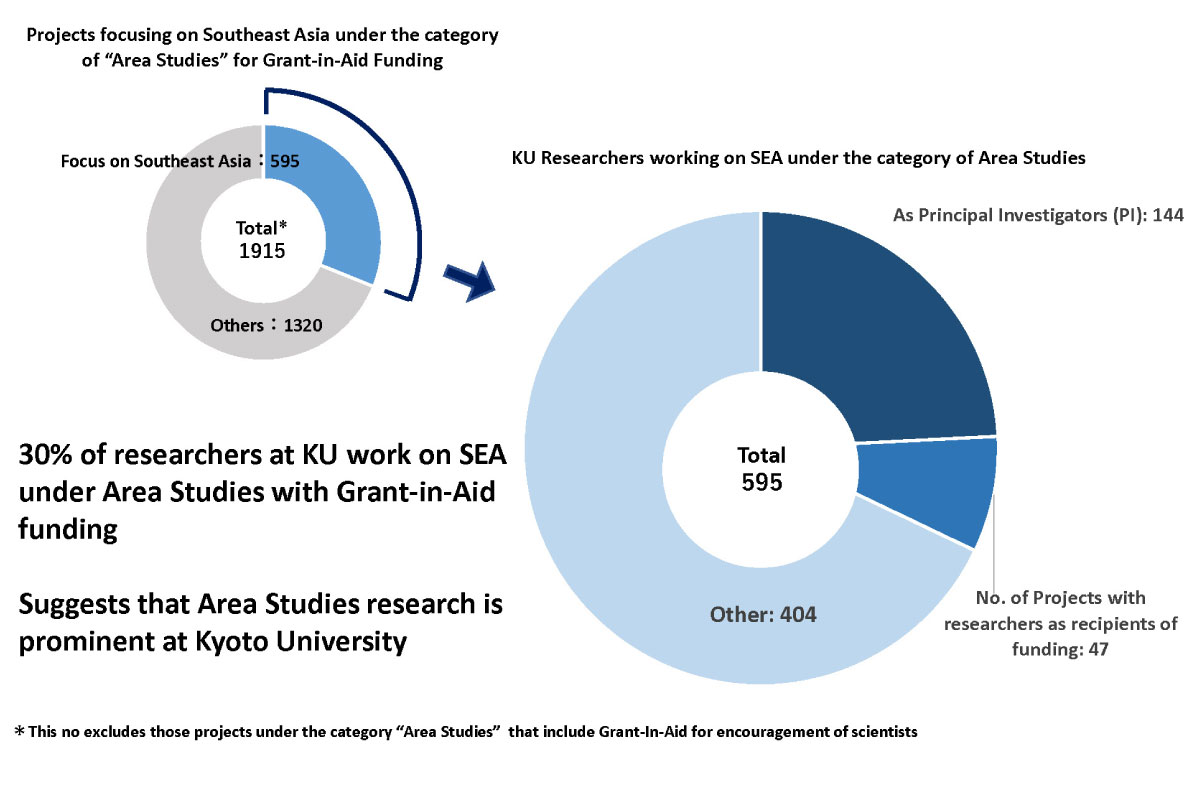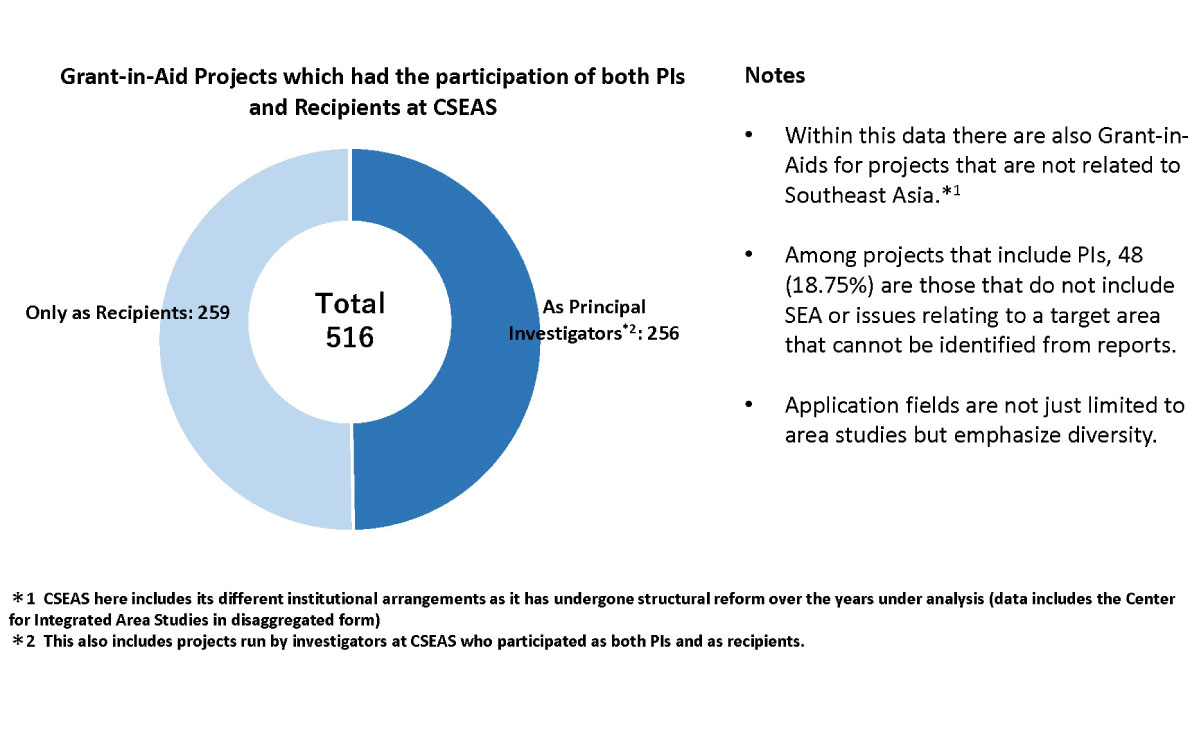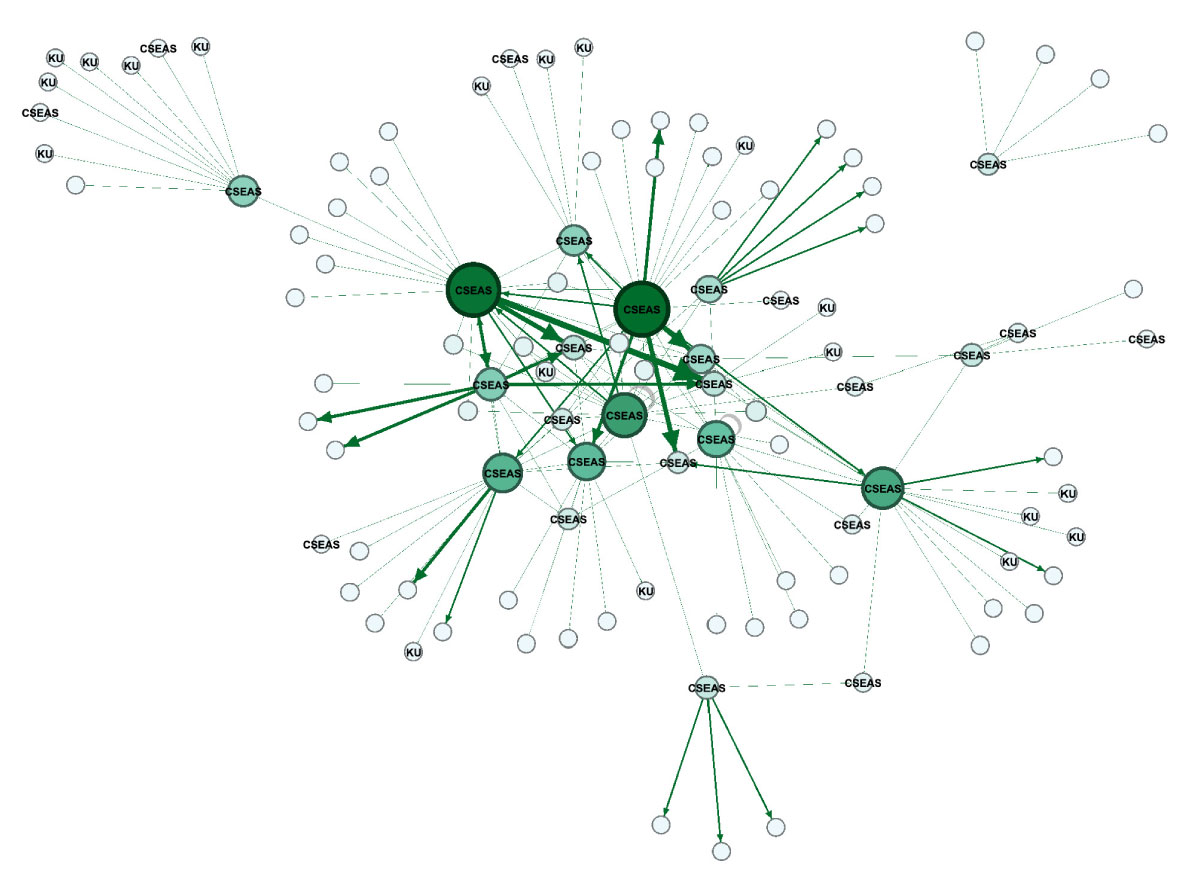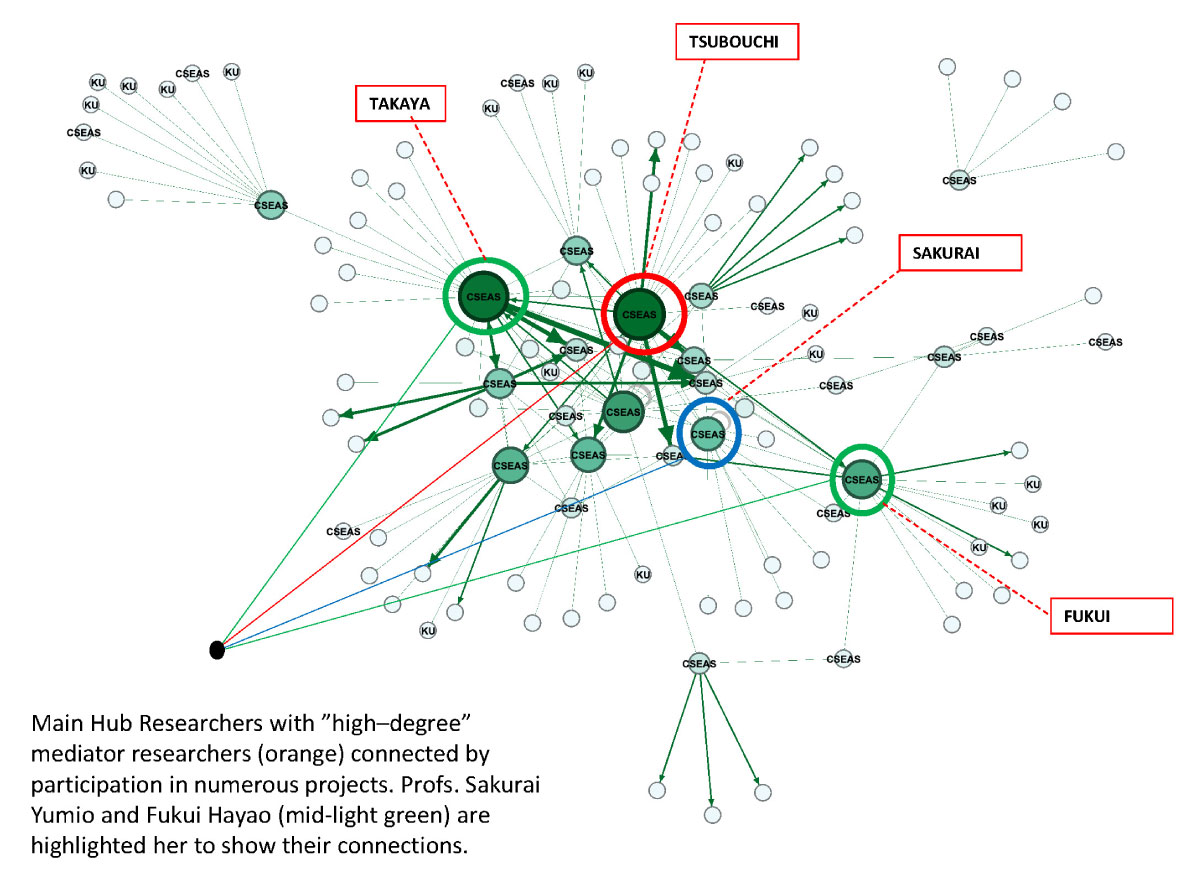There continues to be a demand for comprehensive academic analysis of increasingly complex regional and global social issues. Within research trends, Japan’s approach to Area Studies research has played a substantial role in shaping interactions to these across a wide range of disciplines within not only the humanities and social sciences, but crucially also the natural sciences. Yet the importance of such contributions by Japanese scholars in shaping the interdisciplinary nature of ‘Japanese-style’ area studies has often remained on the fringes of larger debates in part as discussions have taken place within a Japanese research ecology. This has meant that debates on the nature of Area Studies have run parallel to those taking place in other Western institutional configurations that did not include the natural sciences. What exactly constitutes Area Studies will very much depend on historical geopolitical encounters, ongoing institutional configurations, and the subsequent legitimization of theoretical and methodological approaches that are adopted (Kono et al. 2019).
Japanese Area Studies has not only been funded and supported through state structures, such as the Japanese Ministry of Education (MEXT), but also through other sources including business and philanthropic sectors. These set the multiple frameworks that guide how we think about the existent paradigms that structure our perceptions of reality. In what ways can we ground Japanese researchers’ contributions to ongoing debates on the relevance of Area Studies and their impact on research agendas? The question “What is Area Studies?” has preoccupied Japanese researchers for more than 50 years (Motooka 1963). Yet from the outset of the institutional constitution and recognition of an Area Studies approach within Japanese Southeast Asian Studies, and in contrast to the United States’ politicized conceptualization and application toward Southeast Asia, the natural sciences were deemed to be fundamentally important in any substantial analysis of the region.1 Recognition of this at the time of founding the Center for Southeast Asian Studies (CSEAS) in the early 1960s has informed periodic institutional reorganizations of the Center over its 52 years of existence. These have had an impact in two closely interrelated ways. Firstly, they influenced both the very projects initiated and the funding CSEAS received. And crucially they also influenced the kinds of people who constituted the personal and institutional networks that fed back into developing and fomenting CSEAS’ international research foundations. In this sense the very people and the research/personal relations that came to shape CSEAS have been as important as the institution-building they have participated in. However, to date, little empirical research has been conducted on what kinds of multidisciplinary relationships were shaped through funding initiatives and how these translated back into the constitution of CSEAS itself. Over the years interviews with former faculty have suggested there were very unique and intimate inter-disciplinary field encounters that had developed through collaborative projects. Interactions of this kind continue to dynamically shape ongoing research trends.2
In order to examine and contextualize this historical evolution in more detail, we have initiated a project to clarify the interdisciplinary collaborations that have been forged over a period of 50 years. The project aims to analyze the emerging trends and impacts of interdisciplinary collaboration within Southeast Asian Area Studies at CSEAS over this period. There are two approaches we employ to do this. The first is through the construction of a database based on researcher attributes and interdisciplinary joint research information that identifies temporal variables to clarify the diverse network within which researchers both within and outside Kyoto University reside. The second is through a more traditional qualitative approach of interviewing present and past researchers affiliated to the Center. As an initial exercise the database contains the project information for all registered Grant-in-Aid projects that were disbursed to current and former faculty members who were based at CSEAS between 1963 to the present. Through the first phase of the project we aim to examine the following. Firstly, to look at the changes in interdisciplinary research themes over decades. Secondly, examine any observable dynamic network changes that may suggest the academic and public-policy reorientation of research agendas. Here, the constant evolution of this reorientation reflects not only researchers’ personal choices, but also their responses to shifting academic debates and Japanese governmental priorities. Thirdly, we aim to clarify the qualitative characteristics of both the subjects and key researchers involved in research projects at CSEAS to identify those factors other than researcher attributes that influence research trends. Finally, we will clarify what are the limits and possibilities of using analytical visualization software for analyzing evolving research trends.
To date, scholars who have expressed concerns over the validity of Area Studies approaches, particularly within the framework of Southeast Asia, have tended to frame their discussions within a social sciences and humanities paradigmatic framework.3 For this particular project we have decided to ground the first phase of research through an area informatics approach.4 We attempt to visualize quantitative information about researcher networks and research activities across time as expressed through the intensity of relations between them and their projects. This is followed by a more orthodox qualitative approach that requires interviewing current and previous faculty to cross examine what data ‘purportedly’ suggests about research themes, trends, changes, and relations in research networks over decades. Previous studies have focused little on researchers themselves and what they do especially in terms of the bonds they form through the projects they carry out in collaboration with other researchers. This project investigates the organic connections and researcher interactions that have supported the development of interdisciplinary and multidimensional research.
Database Construction and Initial Analysis
For the purpose of the first stage of this research, we have chosen an initial limited data analysis and constructed a database that allows us to examine ‘Area Studies’ categories from 2003 to 2020.5 Since the founding of CSEAS in 1964 the Center has received 515 awards for Grant-in-Aid for funding (256 as Principal investigators and 259 as co-investigators). Area Studies as a category to apply under, has been available since 2003 and for analysis purposes in this article, we take this as a point of departure.6 In total, we have identified 2,437 projects that were adopted under ‘Area Studies’ within which the number of target research projects stands at 1,915. Within this we have identified 595 projects that focus on Southeast Asia and other related areas (Diagram 1). Among 1,915 projects, 595 projects related to Southeast Asia and were directly attributable to Kyoto university. Of these 144 researchers have been principal investigators (PI) with 47 as co-investigators. What this first level analysis shows is that Kyoto university accounts for around a third of all projects that are focused on Southeast Asia under the Category of ‘Area Studies.’

Diagram 1 Kyoto University (KU) Researcher Involvement under the category of Area Studies (with focus on Southeast Asia)2003-2020
We have also conducted a parallel analysis of Grant-in-Aids CSEAS has received since 20037 (See Diagram 2). The Center has received 516 awards with 256 directly related to faculty and researchers based at the Center.8 This initial analysis suggests that CSEAS has a very diverse, broad approach to Area Studies and research concerns are not just limited to Southeast Asia.

Diagram 2 Acquisition of Grant-in-Aid for the Center for Southeast Asian Studies between 2003-2020.
In order to give more depth to our analysis we have also used visualization software to reveal underlying structural relations and associations between researchers and the projects they have initiated.9 This allows for a social network analysis to observe organizational trends and follow these across and between projects. Diagram 3, 4 and 5 are directed graphs that present researcher relations at CSEAS between 1987 to 1994. This period covers two overlapping stages in CSEAS’ history, a joint studies development stage (1970s~80s) and an integrated Area Studies stage (1990s to early 2000s). The period under analysis identifies 41 projects with Principal Investigator (PIs) at the Center that run over these years with 37 co-investigators. In total 107 affiliated researchers are represented. In order to not follow a perceived conclusion that certain researchers acted as ‘project hubs’ we anonymized data so that we only see relations between CSEAS and relations with other researchers (i.e. as co-investigators, see Diagram 3).

Diagram 3 Grant-in-Aid Investigator hubs at CSEAS between 1987-1994 (Investigators Anonymized)
On analyzing data, we are able to uncover and pinpoint the main hub PIs for the period concerned and which other co-investigators they are connected to within CSEAS (Diagram 4). This shows the ‘degree centrality’ between PIs and co-investigators. The darker, larger hubs show a greater degree of connections in terms of their eigencentrality, that is, the measure of their particular influence as a node in a network.

Diagram 4 Grant-in-Aid Investigator hubs at CSEAS between 1987-1994 (Investigators Clarified)
In Diagram 4 we can see former professors, Takaya Yoshikazu (Geology, 1934-2016), Tsubouchi Yoshihiro (Sociologist), Tachimoto Narifumi (Anthropologist and former Director) as three principal hubs. These researchers were all active as representative faculty in the mid 1980s~90s and can give us some sense of what types of collaborations played out in and across individual and joint projects. This graph reveals that these professors were very active in initiating projects as well as also fostering other staff who are represented as active co-recipients. It was during this period that some of CSEAS’ large-scale team based research projects took place such as the “Comparative Studies on the Maritime World” (1992~93 Headed by Professors Takaya Yoshikazu and Yano Toru), 16 members, 12 who were based at CSEAS) and “Southeast Asia as a Frontier Space” (1988-90, Headed by Professors Takaya and Ishii Yoneo, 9 CSEAS members). Looking at these projects allows us to clarify the dynamic relations that developed between researchers from different disciplines that fed into the ongoing formation of a multidisciplinary Area Studies and the subsequent high output of academic materials in Japanese supports this. 10
We can also quantify that those researchers who, as nodes connected to other nodes, are ‘high-degree’ mediators. Diagram 5 presents the ‘between centrality’ of nodes in the network.11 Here, we can also identify two more faculty professors Sakurai Yumio (Historian and Area Studies Specialist, 1945-2012) and Fukui Hayao (Agro-economics) who functioned in this way during that period.
We were also able to note which faculty at this time operated as vectors and Diagram 6 highlights the eigenvector centrality of former CSEAS director, Tanaka Koji (Agriculture), who joined the Center in 1979. This shows the centrality of the relations that exist as expressed through the nodes that connect to a person. What these initial data visualizations clarify is that researchers from different disciplines worked together on multiple projects contributing to the formation of a multidisciplinary approach toward Japanese-style Area Studies. Taking this approach and extending it across decades allows us to historically analyze some research trends and outcomes that concretely shaped CSEAS’ constitution and shaped the development of Area Studies approaches to research on Southeast Asia conducted at the Center.

Diagram 5 Grant-in-Aid Investigator hubs at CSEAS between 1987-1994 (Including Hubs and Nodes)
The preliminary sketches above can be further enhanced by an additional, if perhaps more ‘traditional’, layer of analysis. This involves interviewing current and former faculty on the constitution of the multidisciplinary environment not just at CSEAS, but its place as a hub within the broader ecology of Kyoto University. At present we have been conducting a historical literature review and interviewing select retired faculty on the basis of what our network analysis reveals. It is hoped that this dual approach will allow us to flesh out what kind of ‘methodological eclecticism’ developed and came to define Japanese approaches to Area- and Southeast Asian studies.12
One of the weakness of the current data-driven approach is that at present we rely on the Grant-in-Aid database to generate the above snapshots. CSEAS has received substantial external funding over the years in the form of institutional support funds from the Ford Foundation (1963), numerous Global Center of Excellence funding for five-year projects and other external grants. Adding these to our data would give us a richer perspective of not just funding activities and research trends, but an insight into the ongoing evolution of research at CSEAS, and within the broader context of Kyoto University as a whole.
Conclusion
Various research and scholarly works have discussed theories and methods of Southeast Asian Studies and Area Studies. However, few studies actually scrutinize the interdisciplinary nature of the networks between researchers, especially through an analysis of the funding, researcher collaborations and time in the field that have developed over the years. This ongoing project aims to bring a fresh perspective through qualitative and quantitative analysis and give us insights into new future directions of research. Area Studies and Southeast Asian Studies are transformative in their nature. The preliminary results of this project hint at what some may see as a known known: that Japanese scholarship has been bridging disciplinary divides for some time and following a more holistic approach toward research attuned to the complex realities of Southeast Asian societies and nature. This has been done empirically for many decades already. Ultimately it is hoped that analyzing interdisciplinary environments of collaboration will contribute to designing and constructing a more suitable human resource environment that will better foster the future development of new directions in Area Studies.
Acknowledgements
- The authors gratefully acknowledge the support from the International Program of Collaborative Research (IPCR) for funding over a two year period (2020-21) for this project “An Analysis of Evolving Trends in Collaborative Interdisciplinary Research in Southeast Asian Studies “ (東南アジア地域研究における学際連携の創発要因と波及の分析). We also appreciate thoughtful discussions and insights with former CSEAS Director Tanaka Koji, Emeritus Professor, Shibayama Mamoru (CSEAS), and Kono Yasuyuki (CSEAS).
Notes
- 1 Motooka proposed in 1963 that what should distinguish Japanese Area Studies from other models is the imperative to include the natural sciences (in collaboration with both the humanities and social sciences) in any analysis of ‘specific regions’ (tokutei chiiki/特定地域). The environmental foundations (shizen teki kiso/自然的基礎) of a region such as the topography, climate, geological conditions, soil, water, flora and flora as well as other natural resources should factor in any analysis of ‘region.’ (Motooka 1963, 13).
- 2 See Nishibuchi on Microbiology (2019, 1-15), Shibayama on Area Informatics (2012, 3-7), Tanaka on Agriculture (2012, 5-10), and Matsubayashi on Medicine (2014, 5-8) for reflections and intradisciplinary dialogues on their respective fields in relation to the formation of Area Studies and with colleagues at CSEAS.
- 3 See Kono et al. (2019) for a detailed overview.
- 4 Area Informatics is a recent information paradigm in Japanese Area Studies. It applies informatics methods to try to “build frameworks of organizing resources, quantifying qualitative data, integrating them with quantitative data from natural and technological sides of area studies, analyzing whole data sets, and finally constructing comprehensive, objective and reproducible images of particular areas.” (Hara 2010, 215).
- 5 Data for this project was extracted from the publicly accessible Grant-in-Aid database. The Japanese Grant-in-Aid for Scientific Research (Kagaku Kenkyuhi jousei jigyo/ 科学研究費助成事業) itself was created in 1939. Area Studies as a category that researchers can select to have their projects evaluated under was first introduced in 2003: https://kaken.nii.ac.jp/ja/index/
- 6 However, this is not a fixed starting point as theoretical discussions and scholarship had already developed from the 1980s onwards to produce writings on what constitutes “area studies” from a Japanese perspective. See Yano (1987) and Inoue and Yamamoto (2017).
- 7 CSEAS has undergone institutional reform over the past 50 years and incorporated with a sister institution, the Center for Integrated Area Studies (CIAS) most recently in 2017. Between 1963-2003 it was known as Tonan Ajia Kenkyu Center (東南アジア研究センター), 2004-2016 Tonanajia Kenkyusho (東南アジア研究所), and from 2017 as Tonanajia Chiiki Kenkyu Kenkyu sho (東南アジア地域研究研究所).
- 8 As an Area studies research unit designated as a national institute by the Japanese government, this number of grants does not just cover Southeast Asia, but also research covered in other regions under the category of Area Studies.
- 9 We utilize the opensource Gephi with Grant-in-aid Data for the selected periods of analysis.
- 10 For example, between 1990-92, CSEAS published a series of 10 books covering nature, society, history, culture, philosophy, politics and so on reflecting the multi-disciplinarity that had taken root.
- 11 Betweenness centrality is a general measure of centrality
- 12 Kono et al. (2019, 3) define this as an approach to be one that is sensitive to different disciplinary domains and their existent paradigms which, when in dialogue, create conditions to question the basis of empirical research and subsequent theorization that arises from it. Different disciplinary domains will adhere to different notions, ideals and methodological research processes that produce knowledge at different speeds and on different registers. An eclectic approach makes possible the constitution of an arena of dialogue not tied to specific domains that can constrain approaches.
References
- Hara, Soichiro. 2010. Area Informatics : Concepts and Status. In Ishida T. (eds) Culture and Computing. Lecture Notes in Computer Science, vol 6259. Berlin, Heidelberg: Springer. https://doi.org/10.1007/978-3-642-17184-0_17
- Inoue, Makoto and Yamamoto Nobuto (eds.) 井上真・山本信人 ( 編 ).2017.Tonan Ajia Chiiki Kenkyu Nyumon: Kankyo / 東南アジア地域研究入門 環境 [Introduction to the Environment in Southeast Asian Studies] Tokyo: Keiogijuku University Press.
- Kono, Yasuyuki, Nathan Badenoch, and Mario Ivan Lopez. 2019. Bridging the Disciplinary Divide: 50 years of Research at the Center for Southeast Asian Studies. Japan-ASEAN Transdisciplinary Studies Working Paper Series. No. 8: 1-42.
- Matsubayasi, Kozo. 2014. “Field medicine” in Japan and Asian Communities. In CSEAS Newsletter 69: 5-8.
- Motooka, Takeshi. 本岡武. 1963. Chiiki Kenkyu to wa Nanika? 地域研究とはなにか [What Are Area Studies]. Tonan Ajia Kenkyu 1.1: 5-19.
- Nishibuchi, Mitsuaki. 2019. Memoir: The Path Hunter with a Scientific Mind in a Sound Body. In CSEAS Newsletter 77: 5-17. https://newsletter.cseas.kyoto-u.ac.jp/nl77/images/pdf/77_02_memoir.pdf
- Shibayama, Mamoru. 2012. Appeal for an Area Informatics Approach to Area Studies. In CSEAS Newsletter 65: 3-7.
- Tanaka, Koji. 2012. Eating from the Same Bowl: Japanese reflections on Southeast Asian Studies. In CSEAS Newsletter 66: 5-10.
- Yano, Toru (ed.) 矢野暢 ( 編 ). 1987. Chiiki Kenkyu: Koza Seijigaku / 地域研究 講座政治学 [Area Studies: Political Science]. Tokyo: Sanrei Shobo.
Grant-in-Aid Projects
- 1992-93. Kaiiki Sekai no Chiikikan Hikaku / 海域世界の地域間比較 [Comparative Studies on Maritime Worlds]. Project No. 04041058.
- 1990-92. Furontia kukan toshite no Tonanajia / フロンティア空間としての東南アジア [Southeast Asia as a Frontier Space]. Project No. 63400005.
Interviews
- 11 July, 2019. Tanaka Koji (former CSEAS Faculty and Director) and Shibayama Mamoru (Emeritus Professor, CSEAS)
- 11 September, 2020. Tanaka Koji (former CSEAS Faculty and Director)
